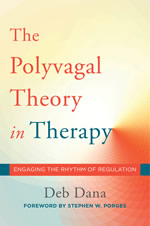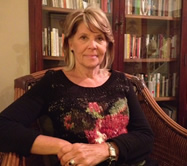The New Mind-Body Science of Depression
To better understand mental illness, psychiatrists have in the past looked at mental illness via a medical model. However, in The New Mind-Body Science of Depression, Vladimir Maletic and Charles Raison claim that we oversimplify major depression by looking at it as a discrete illness. As a result, we overlook the significance of research that doesn’t support that view. They suggest that the answers to many of our questions about major depression can be found by analyzing and integrating information we already have, but in the past ignored. They seek to map out how we came to view major depression as a discrete illness and provide evidence against that view. By doing so, they demonstrate that by sticking to misconceptions about mental illness, we are oblivious to important information that can provide some of the answers we’ve been searching for.
How to stay with the how: Some pedagogical suggestions on assisting the mindful sensing...
Many people, myself included, believe that the ability to clearly sense emotions and to experience bodily sensations is crucial for our mental, emotional, and physical health, but it does not come easy for everybody. The following pedagogical suggestions are based on my personal experiences and difficulties with mindfulness meditation and my studies of and experiences with Gurdjieff awareness-work, the Alexander-technique, Eugene Gendlin’s Focusing, Fritz Perls´ gestalt therapy, and especially Wilhelm Reich with his appreciation of “the how” when it comes to bodily expression, specifically contact with reality, with the body, with the emotions, with the self and with the “other. I offer that one can argue that to be concretely aware of one’s body's experiences connects us to the “here and now” and to the experience of reality, as opposed to self-deception in diverse forms, and that it is to be expected that the endeavor will be met with resistance and that assistance may be sorely needed.hat are reported (like stress reduction, attenuation of diverse clinical symptoms etc.)
Active Pause® Part 1: The pause as part of a mindful process
This is the first in a series of articles about the power of the pause in life and in therapy. In this article, I talk about why I am calling this kind of pause Active Pause, instead of just calling it a pause. In a nutshell, because the word ‘pause’ alone doesn’t do it justice. In everyday language, what we call a pause is a moment where activity is suspended, i.e. something that we associate with a blank as opposed to activity. I use the word ‘active’ to make the point that the pause is not just a ‘blank’ but an intentional rupture from the status quo, the flow of things as they currently are. Without rupture, there is no possibility of a breakthrough. If the pause were just a pause, in the ordinary sense of the term, what comes after it would be pretty much the same as what comes before it. But the value of the pause is that it allows for disruption, for the possibility of change.
The Sweetie Pie Syndrome by Ronan M. Kisch, Ph.D.
Sweetie Pie Syndrome typically starts in childhood — it is usually characteristic of females, but it does occur in males. This condition begins as young children are either ignored by or are demeaned by a parent or parents. This behavior can also be role modeled by a parent. As a result of this chronic neglect, abuse, for example, these children develop a sense that a) there is something wrong with them, b) they are basically unlovable, and/or c) if they do not do things to be accepted, they are unworthy. They then develop a behavioral repertoire of constantly trying to do good things and help others to gain a sense of worthiness and lovability. But no matter what or how much they do, the dysfunctional parent perpetually ignores or fails to respond with recognition, positive reinforcement and love. So, the children invest in doing more.
Dream Theater, Inc.
In a clinical world of diagnosable disabilities, there are those who create theories, those who propose methodologies, and those who ascribe to them. And then there are people who simply do what they do, intuitively, without knowing the science behind their actions.
I recently met such a couple, Michelle and Troy Wheeler. They founded Dream Theatre Inc., eight years ago in Roseville, California, as a year-round, full-time theater arts program for adults with disabilities (ages 18 to 64). The program was designed to instruct, develop and guide students with disabilities who want to become actors, musicians, dancers, visual artists and behind-the-curtain technicians.
While many day programs teach daily living skills, the Wheelers guide students in relationship building and maintenance with a focus on the social engagement skills necessary to facilitate them (i.e. inter and intrapersonal communication skills, self and co-affect regulation, trust, self-confidence, and more). Within the context of classes and annual performances, students learn how to be part of a working community that involves team work and personal responsibility.
In the Darkest Places: Early Relational Trauma and Borderline States of Mind
In Into the Darkest Places: Early Relational Trauma and Borderline States of Mind, Jungian Marcus West re-declares early relational trauma as the root of psychological distress and analytic thinking. West ultimately works to develop an integrative approach to trauma analysis and therapy incorporating ideas from theorists like Freud and Jung who prioritize internal reactions to trauma and Ferenczi and Bowlby who emphasize real-world experiences. He suggests that our analytic approaches to trauma cannot be divorced from the experience itself or the individual and internal responses. Subsequently, using his integrative approach West offers a nuanced understanding of borderline states of mind.
The Practice of Embodying Emotions: A Guide to Improving Cognitive, Emotional, and Behavioral Outcomes
This morning I felt a connective epiphany, a strong resonance, while reading Raja Selvam’s new book, The Practice of Embodying Emotions, chapter 9 specifically, I felt like someone in the driver’s seat actually knew where he was going, directed by an intuitive GPS taking him and me to an emotional place that made sense: sensorimotor emotions. I offer my review of his book in hopes it might shed light on clients you are working with or perhaps something within yourself as well.
The COVID-19 Pandemic is a Paradoxical Challenge to Our Nervous System: A Polyvagal Perspective
The spread of the SARSCov2 virus presents an unprecedented event that rapidly introduced widespread life threat, economic de-stabilization, and social isolation. The human nervous system is tuned to detect safety and danger, integrating body and brain responses via the autonomic nervous system. Polyvagal Theory provides a perspective to understand the impact of the pandemic on mental and physical health. This perspective highlights the important role of the state of the autonomic nervous system in exacerbating or dampening threat reactions to the pandemic.
Psychotherapy East & West
In Psychotherapy East & West, Alan Watts attempts to bridge the gap between Western psychological thought and Eastern ways of life. Originally published in 1961, his goal was to provide an updated perspective on Western versus Eastern psychological ideas and provoke thought and experimentation in the reader. The 2017 reprinting of this classic instills new life into Watts’ argument that using psychotherapy without an understanding of Eastern ideologies will fall short of helping one to reach a feeling of true liberation. He posited that the groundbreaking insights of influential psychologists such as Freud and Jung synthesized with the Eastern spiritual philosophies of Buddhism, Taoism, Vedanta, and yoga could liberate people from the internal struggles within themselves.
Active Pause® Part 2: If the pause is a natural part of the human...
What is that mindful practice? Is it sufficient to just have a ‘mindful practice’, such as mediation, or yoga, or Focusing? It would probably help some, but it wouldn’t be enough to replace the specific practice of inserting the lens. The more intense the potential danger, the more our reactive circuits take over, bypassing the circuits that counterbalance reactivity. In other words: The more intense the potential danger, the more we need to train our mind to recognize that this specific danger is safer than it appears to us.
Why am I calling this a ‘mindful practice’, as opposed to just ‘training’?











